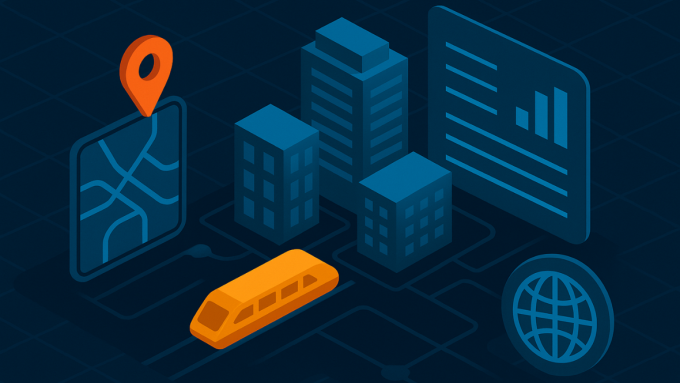Optimising traffic flows, providing live updates on EV chargers, and reducing infrastructure maintenance are just three ways in which digital twins are revolutionising transport. Transport Minister Jesse Norman, today unveiled a Vision and Roadmap to align efforts and supercharge this revolution.
22.06.23, LONDON, In his keynote speech at the inaugural Connected Digital Twins Summit, hosted by Connected Places Catapult, the UK’s innovation accelerator for cities, transport and place leadership, and the Digital Twin Hub, the UK’s Transport Technology and Decarbonisation Minister launched the TRIB Transport Digital Twin Vision and Roadmap to 2035. The Vision and Roadmap were developed by the Catapult for the Department for Transport’s Transport Research and Innovation Board (TRIB).
The Roadmap sets out a series of activities to 2035 that key stakeholders within the transport ecosystem need to undertake. The roadmap details the steps required to deliver the vision for connected digital twins across four key areas: strategy and innovation; enabling environment; people, skills and culture; and technology and data. It will be a tool for engagement and alignment around common strategic priorities.
The Roadmap’s accompanying Vision aims to:
“Enable a trusted ecosystem of connected digital twins for multi-modal UK transport networks. This will facilitate effective decision making to optimise solutions and deliver efficient, safe, and environmentally conscious mobility for people and goods.”
Federated networks of digital twins can play a key role in supporting the UK transport sector to realise the government’s ambitious targets for achieving net zero, improving the user experience and growing the digital economy throughout the country. Networks of Digital Twins can increase resilience, improve safety, accelerate innovation and improve collaboration with the transport sector. The potential value of technologies like digital twins, AI and robotics increases as they start to converge to form a cyber-physical infrastructure where new products and services can be developed which can lead to the seamless connection of autonomous vehicles and transport.
Research from McKinsey Digital, published last year, shows that 70% of C-suite technology executives at large enterprises are already exploring and investing in digital twins, with market research firm Markets and Markets estimating digital twin investments of more than $48 billion by 2026.
As part of the Vision and Roadmap, the Department of Science, Innovation and Technology sponsored six innovative SMEs to develop use cases, illustrating the ways in which digital twin technology can provide value to the transport sector, including:
- Slingshot Simulations, which has developed a digital twin called Compass Engine to predict the impact of introducing changes to the highway network in urban areas, such as closing certain roads to reduce emissions
- Digilab is building a digital twin called twinAir which monitors air pollution from road traffic in real time. The company has created what it calls a ‘physics informed surrogate’ for the city of Exeter that collects air quality data from the roadside. It then scales this information to provide a more accurate picture of traffic related pollution right across the city.
- OpenSpace is helping railway station operators harness digital twins to put passengers at the heart of decision-making. Its digital twin solution fuses real-time passenger detection, virtual spaces, analytics and visualisation to provide intelligence to help boost the customer experience, increase revenues and reduce costs.
In his keynote speech, Minister Norman also announced the winners of the UKRI competition to select a Research Leader for Digital Twins to Decarbonise Transport. These include Professors Philip Greening of Heriot-Watt University and David Flynn of the University of Glasgow with their TransiT project, who will now work with stakeholders to the create a proposal for a national research hub that, if successful, will be supported by a UKRI investment of up to £20m over five years.
Transport Technology and Decarbonisation Minister Jesse Norman said:
“”The UK is a global leader in transport technology partnering with industry.
“The Vision and Roadmap for Digital Twins shows how the Department for Transport is supporting innovative digital twin technologies for a cleaner, greener and more efficient transport system.”
Paul Wilson, Chief Business Officer at Connected Places Catapult and member of the Transport Research and Innovation Board, said:
“Connected digital twins are well placed to deliver significant economic, social and environmental impact and drive the UK as a science and technology superpower.
“This roadmap shows how we can go from pockets of excellence with this technology, to wider implementation across our towns and cities. Only then will we be able to realise this technology’s potential to deliver greener, multi-modal transport at scale.”
To view the TRIB roadmap and vision, you can use the following link: Transport Research and Innovation Board – Vision and Roadmap and 2035


Leave a comment